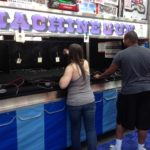One pattern in the 150-200 credit union mergers occurring each year is CEOs nearing retirement, using merger as a “succession plan.” After decades of leadership, their final act is to dissolve the organization that gave them the top job of their professional career.
A CEO’s Responsibility and Fiduciary Duty
Every CEO contributes in multiple ways to the “ongoing concern” of the organization they are chosen to lead. These responsibilities include developing strategy, ensuring the trains run on time (performance), defining a culture, and acting as chief spokesperson for external contacts. All for the purpose of serving members better and ensuring the continuity of the enterprise.
Succession planning is integral to this purpose. This can be a process of nurturing internal candidates and/or using external consultants.
I am disappointed for members when I read that a CEO’s final act is recommending the merger of their independent institution. The credit union has been the platform for the CEO’s leadership opportunity, industry status and professional reputation for many years.
Instead of their role as a “relay” runner passing on the baton, their tenure becomes a “sprint” to the finish and no one else gets to run.
This appears to be the situation at Xceed Financial Credit Union ($942 million) where the CEO who took over in September 2006, sent an email recommendation to members this July. The letter announced (after 14 years as the leader), the best future course of the credit union was to merge with Kinecta FCU ($5.1 billion) “to better serve you.”
The Reasons Given Members
The email listed six reasons including “a broader product lineup, higher dividends, lower fees, more robust digital banking, full Saturday banking, and expanded branch network including 22 locations in Southern California.”
No comparative facts were provided other than citing the 22 additional Kinecta branches. Of Xceed’s current nine branches, only one is in Southern California. It would seem unlikely that members using Xceed’s locations in San Jose and Menlo Park , CA (several hundred miles to the north) or the six locations in Rochester, NY, Parsippany, NJ, and Leesburg, VA, would see this “expanded” network as “better service.”
The key logic justifying this step is “joining forces will give us economies of scale” and “the combined credit union will be the 35th largest in the country with approximately $6 billion in assets.”
So, after 14 years at the helm, the CEO and board determined the credit union was no longer capable “to effectively compete in the future or deliver the products and services that you need and want.” The only solution is to merge.
The CEO assures the members the loss of their independent charter will be OK: “I fully support this merger. . . I will also be staying on as president of the combined credit union and fully intend to ensure your needs and interests remain a top priority. . .”
This assurance seems questionable after telling members the credit union is no longer viable after the CEO’s 14-year reign.
Kinecta’s East Coast Base?
The July 16 joint press release reported the CEO of the combined operations would be Kinecta’s CEO. He is quoted: “This will be great news for members of both credit unions. . .and will enhance access for Kinecta’s east coast members.”
How important is this “east coast” member base? According to Kinecta’s HMDA filings, the credit union originated no mortgages in New York in 2019 and only 17 (1.1% of their total) on the entire east coast. In 2018, the numbers were 27 east coast mortgages (2.7%); in 2017 the total was 19, 1.4% of all mortgages. Again, the purported “east coast member base” rationale seems dubious.
Members Vote After NCUA’s “Approval”
The first sentence of Xceed’s member letter states that the credit union is “seeking approval from the National Credit Union Administration,” implying that this is an action that will be duly vetted by the regulator. Only much later is it stated that “you will have the final say when a member vote takes place early next year.”
NCUA’s role is administrative, not substantive. The most important function is to approve the required member disclosures of any financial benefits gained by Xceed’s CEO and/or other employees from the merger. Until then, these personal interests are secret.
How Can Members Assess This Recommendation?
Both the press release and member letter are filled with glowing promises that everything is going to be better. There are no factual product comparisons. How can members determine if this really is a bona fide action?
Is there a way to go beyond the marketing rhetoric and vacuous assertion that size makes us better?
Or is this just a convenient exit for a CEO and board unwilling to work through succession?
The CEO and Board’s Track Record
One way to assess these promises is to look at the track record of the leadership proposing this action. How has the stewardship of Xceed’s board and CEO in the last 14 years built the credit union and served members?
In December 2006, shortly after the current CEO was chosen, the credit union reported $734 million in assets; 70,588 members, 14 branches and a net worth ratio of 11.65%.
In the June 2020 call report the same numbers are $943 million in assets; 49,280 members, 9 branches and 9.91% net worth. Three of these four measures of institutional performance are in steep decline.
The credit union’s compounded annual (CAGR) asset growth for the past five years is a negative (-0.67%) per year. The CAGR for the 14-years is 1.39% or less than a quarter of the industry’s 5.77% annual growth in the same time period. The 1.39% annual growth also includes five mergers that added $200 million in external assets and over 30% additional members during this time.
The latest financial results are equally unsettling. In the June 30, 2020 call report, the credit union shows a year-to-date loss of $1.8 million. This compares to a positive $1.7 million for the first six months of 2019, a $3.5 million downturn.
Five Prior Mergers
During this 14 years of just over 1% annual growth, the CEO completed five mergers starting with two small ones in 2008.
On December 31, 2012, the merger of the $55 million Safeway Los Angeles FCU increased Xceed Financials’ membership by nearly 20% and added a branch in Norwalk, CA, according to Xceed’s press release.
Two other combinations were in 2016 with the $102 million Reach Credit Union, Menlo Park, CA, and the $29 million Postmark Credit Union in Harrisburg, PA.
The reasons provided in these mergers are the same Xceed now uses for combing with Kinecta: greater efficiency, larger lineup of products and services, and tremendous opportunities for growth.
After five mergers, the result is the credit union has lost over 20,000 members, recorded negative annual asset growth in the five most recent years, and reduced the number of branches from 14 to 9 since 2006.
As this member and branch downsizing occurred, the credit union’s total investment in buildings and fixed assets went from $6.5 million in 2006, to $23.5 million (350%) 14 years later.
Merging in a Time of Crisis
Xceed’s board and long-serving CEO are telling members they will be better off by turning their future over to a new board and senior management team to which they have no connection. Nearly six decades (since 1964) of member, corporate and community relationships are being jettisoned with no documented benefits or plan. Only marketing generalities.
This relationship history is especially vital during a once-a-century health pandemic and in the quarter the US economy recorded it largest GDP decline ever. From coast to coast, credit unions are stepping up efforts to respond to special member needs.
Members need their credit union now more than ever. A reliable financial partner with years of familiarity of their employer and personal circumstances, is an asset. Members impacted by today’s economy are counting on institutions they supported in better days.
They want to know their years of loyalty will be honored and their individual circumstances served when facing financial uncertainties beyond their control.
It is not size but relationships that matter. Whether the credit union is the largest, the 35th or has fewer than $10 million in assets, the key is being closer to the member than any other financial option.
Members’ confidence is based on the mutual understanding, “We are in this together.” When that value is lost, members vote with their feet. To believe a merger can reverse this shortcoming will just accelerate the steps out the door.
Neither the CEO’s letter nor the joint press release mentions anything of these immediate circumstances. That signals members’ interests are not the priority.
What’s at Stake? (“Far more than what meets the eye”)
The reasons for this merger are suspect. If the members’ best interests are not the case, what could it be?
The CEO’s words suggest the motivation. The first sentence starts, “I’m excited.” This emotion is cited twice more: “We couldn’t be more excited,” and finally, “I hope you share my excitement.”
These are the sentiments of personal ambition. This is hype hiding a $1.8 million six-month loss and the long-term decline of members and market presence. This is in fact a case study of “organizational entropy.”
A change is needed, but not that proposed in the “happy talk” letter. The merger reasons are not factually grounded. It hardly enhances “convenience” for members, the vast majority of whom are across the country and far distant from the new Southern California headquarters.
Proposal Contradicts CEO’s Own Criteria
Xceed’s CEO wrote a 2010 op-ed on mergers in the Credit Union Times with the following assertions:
“At the end of the day, credit union mergers must be based on what’s best for the member (of both credit unions). At Xceed FCU, although we operate across the country, we wouldn’t merge a credit union just for the sake of expanded asset size. There’s far more at stake than what first meets the eye. . . Mergers call for serious consideration and although I appreciate the unprecedented difficult operating environment we find ourselves in today-let’s continue asking the question “What’s in it for the member?””
That’s the question members should be asking. The CEO has disowned her own criteria: “We wouldn’t merge a credit union just for the sake of expanded asset size.” That statement alone should raise doubts not just for members, but across the cooperative system.
A Test of Cooperative Democracy
This is about common good versus private interest. Credit unions have shown they cannot be beaten from the outside, but they can be undermined from the inside. The essential bonds of trust, transparency and integrity which every credit union requires are hanging by a thread.
When something appears illogical, devoid of member consideration and not right, it is time to speak up.
NCUA has proven incapable of protecting members’ best interests in mergers. That responsibility will fall on concerned members, volunteers and employees. This is a test whether democratic governance can prevail. A cooperative system is sustained only if people are willing to stand up and fight for it.
When leaders seek to end the 50-year legacy from which they personally prospered, member-owners must confront this leadership abdication. The cooperative does not belong to any one CEO or board, but to all the members.
Call To Action
Cooperatives conquer challenges based on the will of their owners to do the same. They connect with persons who see more in their cooperatives than simply a banking channel, a kiosk, a website, a phone center, etc. These owners see an organization, a community, and personal solutions worth building.
COVID has accelerated our digital persona skills. Sound the virtual alarms via Twitter, Facebook, and all networked connections. The collective’s future is at stake. The proof of the cooperative difference will be democratic action to halt this sell out of Xceed Financial Credit Union.
For further analysis read: Thoughts on Mergers: The Tallest Candlestick Ain’t Much Good Without a Wick
 Print This Post
Print This Post












